 United States of Brazil/Federative Republic of Brazil (1944-1972)
United States of Brazil/Federative Republic of Brazil (1944-1972)
Armored Reconnaissance Vehicle – 54 Purchased
With World War 2 in full swing and the United States at war with the Axis, the United States sought to secure its position on the American continent. Through multiple ways, the United States would successfully influence all the American countries to either side with the Allies or stay neutral throughout the conflict. Brazil was one of these American countries which joined the side of the Allies in August 1942, partially because German submarines sank multiple Brazilian ships close to the Brazilian coast and due to Getúlio Vargas’ pragmatic rule of Brazil.
One of the realisations of the United States in their attempt to secure the American continent was that most of the equipment of the armies and infrastructure of the American countries were seriously outdated. Brazil was no exception, as it still operated five Renault FTs and 23 L3/35 in a mixed squadron. During World War 2, Brazil would acquire aid in industry, logistics, army modernisation, and equipment through Lend-Lease. The latter was also done to help deter any neutral American nation from siding with the Axis.
Among the equipment Brazil received were 54 T17 Deerhounds, making Brazil the only country to operate the T17 in regular Army units. In fact, the T17 would be Brazil’s first 6 x 6 wheeled armored fighting vehicle and began the story of 6 x 6 wheeled vehicles in Brazil which still continues to this day with the EE-9 Cascavel and the Guarani APC. Sadly, the Deerhound has become a forgotten vehicle in the United States and it would meet an equal fate in Brazil, being overshadowed by the successful and beloved M8 Greyhound.

Source: https://cyberplasticmodeler.blogspot.com/2014/07/walkaround-vol11-t17-deerhound-6×6.html
The T17 Deerhound
The development of the T17 Deerhound was initiated after Spring 1941, when the British Purchasing Commission submitted their requirements for both medium and heavy armored cars which they wanted to receive as soon as possible. At the same time, the American Armored Force Board came forward with their specifications for a wheeled vehicle based on the British experience in Africa. The medium armored car was designated as T17, and both Ford and Chevorolet came forward with a design.
The Ford design is what is known as the T17 Deerhound today, with a 6 x 6 suspension system. The Chevrolet design was a 4 x 4 driven vehicle that was redesignated as T17E1 and would later be known as the Staghound. Ford’s design initially used two 90 hp Ford engines, but these were replaced with two Hercules JXD 110 HP petrol engines. Both engines used an individual transmission and linked up to a single transfer case. The T17 had, as a result, 8 forward and 2 reverse gears.
The first pilot was delivered in March 1942 but was rejected due to numerous mechanical defects and extensive failures in the axles and transmission. The second prototype would attempt to solve these issues, but would cause the vehicle’s dimensions and weight to become too excessive and it was rejected again. As a result, the contract of the T17 Deerhound was reduced to 250 vehicles. Originally meant for the British, which had named it T17 Deerhound, they rejected it as well. As a result, the 196 T17 Deerhounds were delivered to the Military Police units in the US with their guns removed, while, unknown to many, 54 T17s were delivered to Brazil through Lend-Lease.

Source: Armored Car – R.P. Hunnicutt
The T17 in Brazil
The story of how Brazil ended up being the only country to receive and operate the T17 Deerhound in combat units is an interesting one. It seems odd that Brazil would order a rejected platform of vehicles, regardless of any lack of materiel or perceived urgency of acquisition. It seems even more odd as the M8 Greyhound was already in service and in use. The answer to this question is that Brazil did not order the T17 Deerhound to begin with. Brazil had ordered 54 M8 Greyhounds, which supposedly arrived in Brazil with the order number of the M8 and the needed documentation. But when the Brazilians started unloading the shipment, it turned out that the ordered M8’s were T17 Deerhounds instead. This was not the only instance either, as a Brazilian archive document requesting clarification from the United States about this issue, also talked about 105 mm M3 howitzers being replaced with 75 mm M1A1’s instead.
Considering the context of the T17 Deerhound project and it being rejected, it seems to suggest that the United States deemed the allocation of M8 Greyhounds to Europe of a higher priority than supplying them to Brazil. The T17 Deerhound was then the perfect vehicle to send instead, as it was still a 6 x 6, they had 250 rejected vehicles standing around, and it was a fairly similar but overall bad vehicle compared to the M8 Greyhound. It thus seems that the United States intentionally dumped the T17 Deerhounds in Brazil.
Brazilian sources are unclear as to when Brazil received the T17 Deerhounds, as they estimate the delivery of the T17 from 1943 to 1944. What is known is that 18 T17 Deerhounds were put into service in September 1944. It would receive the local classification of Carro Blindado de Reconhecimento or CBR (English: Armored Reconnaissance vehicle). The Deerhounds would serve as both reconnaissance and command vehicles.

Source: https://caiafamaster.com.br/destaque/um-seculo-de-blindados-no-brasil-braco-forte-na-defesa-da-patria-aco-no04/
The T17 was delivered to 3 units, 2 were Regimento Motomecanizado’s (RMM) (English: Motomechanized Regiments) and the other was a Batalhão de Polícia do Exército (BPE) (English: Police Battalion of the Brazilian Army). The Regimento Motomecanizado’s would later be renamed and reorganized on May 17th 1946 as Regimento de Cavalaria Mecanizado (RCMec) (English: Mechanized Cavalry Regiment).
Markings would also start to be standardized around this time. From pre-1946, when they used a star in the colors of Brazil, it was replaced from 1946 to 1983 with the Cruzeiro de Sul, translated as Southern Cross. In addition, the registration of the vehicles was also standardized, with the EB10-XXX format. EB referred to Exército Brasileiro, the 10 to the type of vehicle, in this case, a reconnaissance vehicle, and the XXX (for example, 084) to which vehicle.

Source: Ford M-8 Greyhound Exército Brasileiro – Surge o conceito de blindado 6×6
From November 1953, the units would be redesignated as Regimento de Reconhecimento Mecanizado (RRecMec) (English: Mechanized Reconnaissance Regiment) until about 1968-1969, after which they would be designated as RCMec again, which they maintain to this day. Since sourcing mostly refers to the RRecMec and this was the longest period in which the T17 served under this regiment designation, the RRecMec designation will be used for future chapters.
2º RRecMec
One of the regiments to receive 18 Deerhounds was the 2º RMM, stationed in the Rio Grande do Sul state, at Porto Alegre. There, they would be operated along with M3A1 Stuarts, but also with M3A1 Scout Cars and Willys Jeeps. Practically, nothing is known about the T17s which served in the 2º RRecMec, except for a single one. EB 10-084, nicknamed ‘Tuiuti’, was retired in 1970, and turned into a monument in Jaguarão in Rio Grande do Sul state. If this particular T17 still exists is unknown. This is because none of the known surviving T17s have the same registration numbers or markings. There are three Deerhounds without any markings at all, so there might be a slim chance that one of these is the ‘Tuiuti’.

Source: https://www.defesabrasil.com/forum/viewtopic.php?t=18372
3º RRecMec
The 3º RRecMec is, relatively speaking, a more documented regiment regarding the T17. 18 T17 Deerhounds were delivered to the then 3º Regimento Motomecanizado’s on September 4th 1944, stationed in Bagé in Rio Grande so Sul. There, they equipped the 3rd and 4th Esquadrão de Carros Leve (English: Light Vehicle Squadron) and served alongside 34 M3A1 Stuarts which were delivered around the same time.

Source: Ford M-8 Greyhound Exército Brasileiro – Surge o conceito de blindado 6×6
With the switch to the RCMEC, the Deerhound would serve under a new composition of two reconnaissance squadrons consisting of T17s, M3A1 Scout Cars, and Willys Jeeps, a Light Tank Squadron of M3A1 Stuarts, a command squadron, and a service squadron. The 18 T17s would receive the registrations from EB10-126 to 136, and from 138 to 141. A single Deerhound, thought to be used as a command Deerhound, was designated EB10-123. Interestingly, this Deerhound is thought to have been one of the final T17s in service, as it was retired in 1972.

Source: Ford M-8 Greyhound Exército Brasileiro – Surge o conceito de blindado 6×6
1º BPE
Like with the 2º RRecMec, practically nothing is known about the service of the T17 within the BPE, which was located in Rio de Janeiro. The only thing that is known is that at least 3 T17s were delivered to the Military Police. If the BPE received 18 Deerhounds is unknown. What is known is that they used them in parades and that they were supposedly retired around the 1970s. The BPE might have been the last operator of the T17 Deerhound.

Source: Ford M-8 Greyhound Exército Brasileiro – Surge o conceito de blindado 6×6
The Brazilian response to the T17?
Although the T17 was certainly an upgrade compared to the Renault FT or the FIAT-Ansaldo L-3, the Deerhound was not popular among the crews. The two Hercules JXD engines had to be synchronized, which was supposedly quite challenging. Because of this, the Deerhounds were usually not really usable. To make matters worse, driving the vehicle on a single-engine in order to get around the synchronization issue would damage the drive shafts. All in all, it seems that the errors which the first T17 prototype had were not really resolved or were simply unfixable because of the T17’s fundamental conception of two engines.

Source: Armored Car – R.P. Hunnicutt
Fate
The exact fate of the T17 Deerhounds is unknown. At least 4 vehicles have survived, while the fate of the rest is uncertain. According to Brazilian sources, some of the 37 mm guns were used to arm the 37 mm VBB-1 project. But this is not necessarily presented as a fact. It would not be surprising if the Brazilian engineers used these guns, considering it would have been cheaper to repurpose the guns, and the T17 was practically retired when these projects started in 1970. It is thought that the other 50 T17s have either been scrapped or used as range targets.

Source: https://www.lexicarbrasil.com.br/exercito/
The remaining Deerhounds
As far as known, only four T17 Deerhounds still exist in the world. All of these Deerhounds are in possession of Brazil, being retired vehicles from the previous three regiments. The T17s are in mixed condition, with a single vehicle being the most complete, still having both engines, but missing a turret basket. One of the four vehicles is currently being restored by the Centro de Instrução de Blindados (CIBld) (English: Armored Personnel Training Centre).
The most complete T17 is located at the Museu Militar do Comando Militar Sul in Porto Alegre Rio Grande do Sul. This T17 has the registration EB10-170. Considering the 2º RRecMec was located in Porto Alegre, and the EB10-170 is not one of the 3º RRecMec designations, it is quite likely that this Deerhound came from the 2º RRecMec. What is interesting is that the EB10-170 registration is not on all pictures of this T17, suggesting that it might have been painted on at a later date and that the registration might not have been its original registration, or of any other T17 Deerhound at all.

Source: Deerhound – Paulo Roberto Bastos and Hélio Higuchi
Another T17 was functioning as gate guardian at the 4º Batalahão de Logistica (English: 4th Logistics battalion) at Santa Maria, Rio Grande do Sul. This gate guardian has since been renovated by the CIBld, and is now presented at the Museu de Blindados do Centro de Instrução de Blindados in Santa Maria, Rio Grande do Sul. It has no registration. The hatches of this vehicle are supposedly welded shut, and as such, this vehicle has probably just received an exterior overhaul and is not in running condition.

Source: Museu de Blindados do Centro de Instrução de Blindados
The third T17 is located at the 1º Parque Regional Manutenção in Rio de Janeiro. Not much is known except that, between 2005 and now, it seems that either the 37 mm gun has been removed or cut off. Considering that this Deerhound is located in Rio de Janeiro, it is quite likely that this vehicle originated from the BPE.

Source: http://the.shadock.free.fr/Surviving_T17_T17E1_T18.pdf
The fourth Deerhound is located at the Parque Histórico Marechal Manuel Luís Osório in Tramandaí, Rio Grande do Sul. This vehicle also does not have any registration, but considering it is located close to Porto Alegre, it is quite likely that this Deerhound came from the 2º RRecMec.

Source: Parque Histórico Marechal Manoel Luis Osorio
Conclusion
The Brazilians needed to modernize their Army and the US needed to supply the Brazilian Army with new equipment to strengthen their resolve on the Allied side. The T17 Deerhound seems to have been more of an equipment dump by the US, than military-aid. It is possible that the Brazilian Army may have ordered the T17 themselves, but either way, it was not much of an improvement. The T17 was not loved by its crews, and the mistakes which had made the US reject it were not fixed or were unfixable.
This was Brazil’s first 6 x 6 and it had made Brazil practically the only country in the world to have operated the T17 in regular Army units. Sadly, the T17 Deerhound ended up with an almost equally tragic story within the Brazilian Army, as it had with the US Army. A rejected vehicle, plagued with significant issues, and most of all, overshadowed by the successful M8 Greyhound.
Illustrations
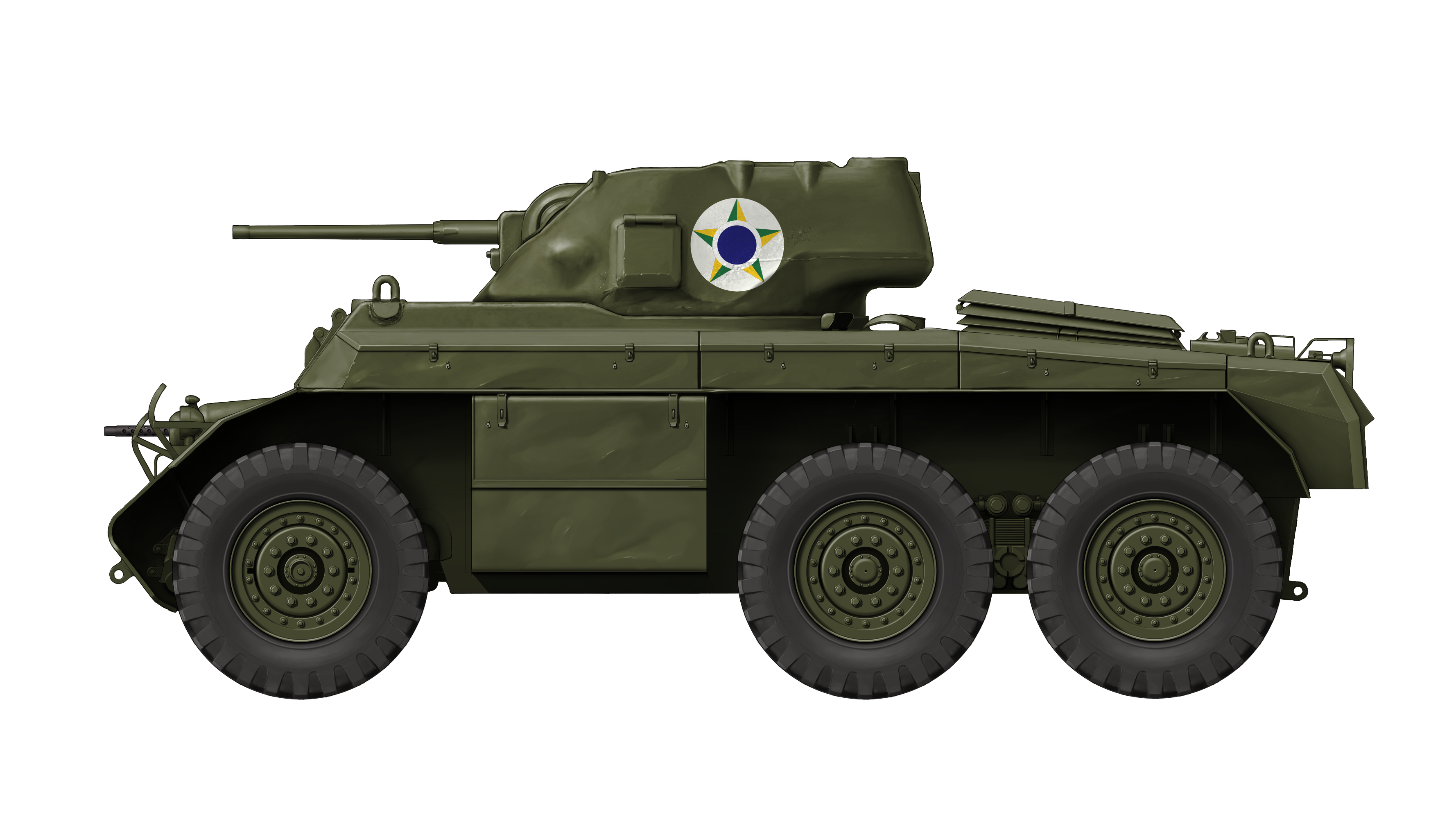
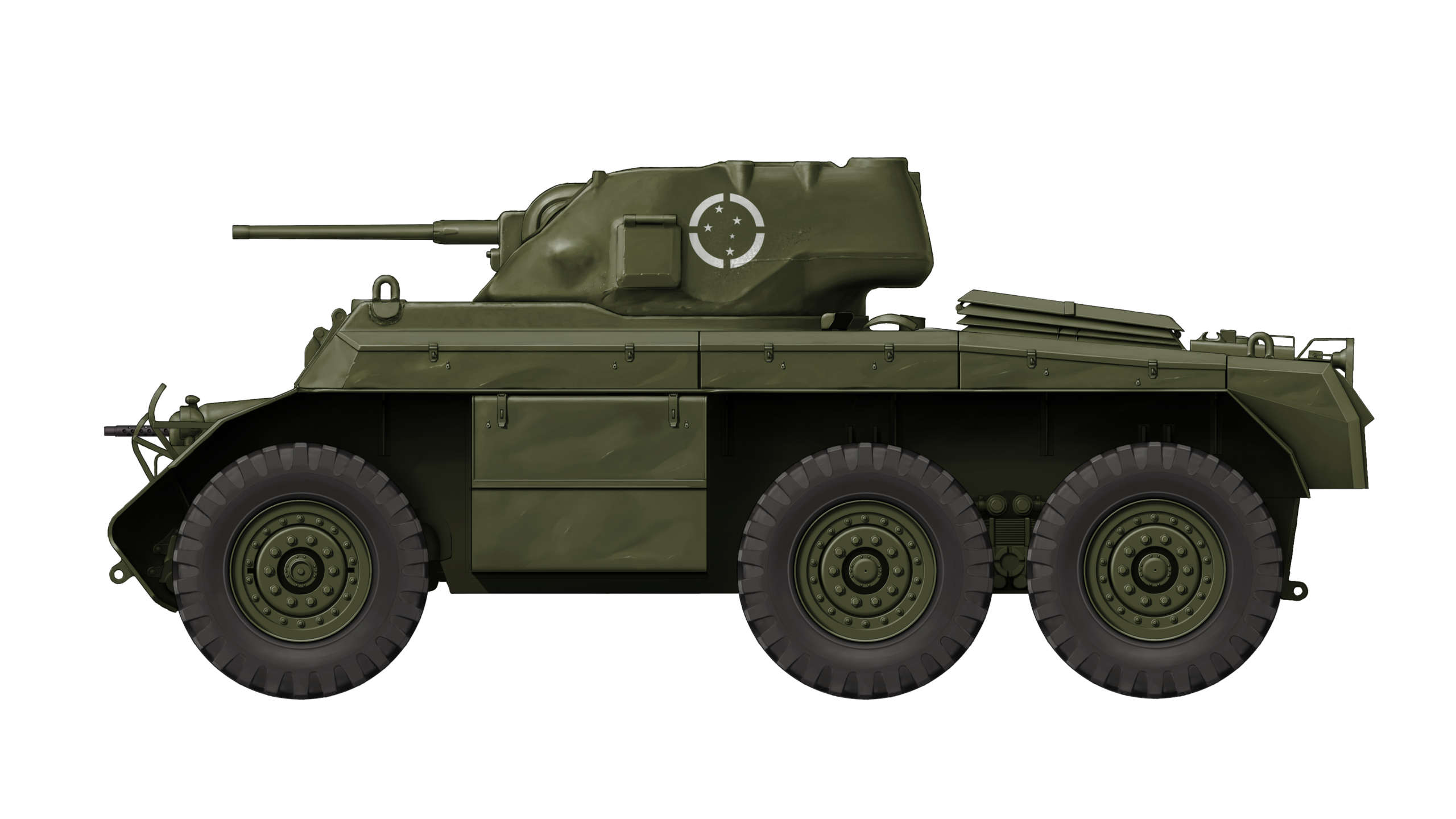
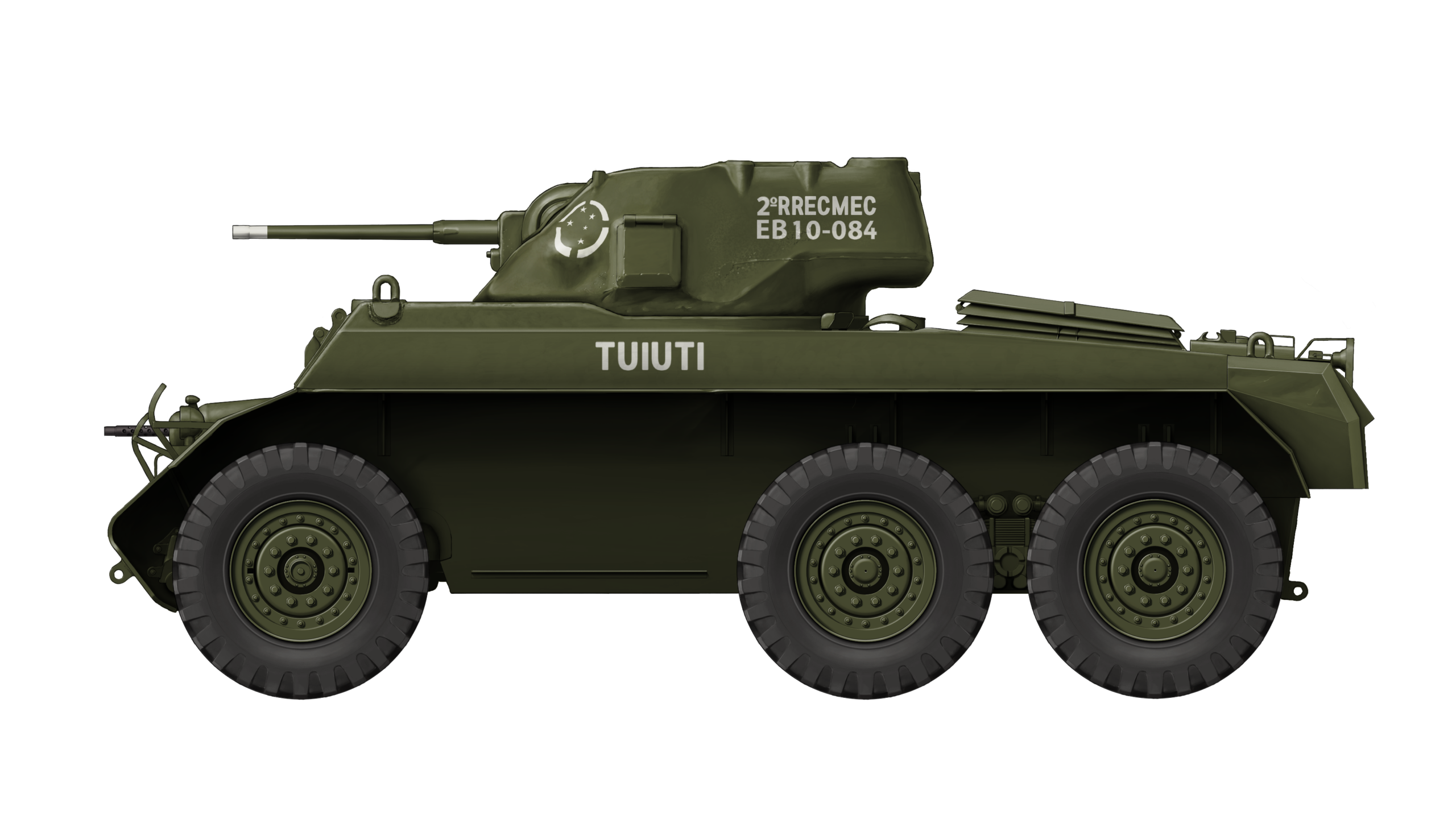
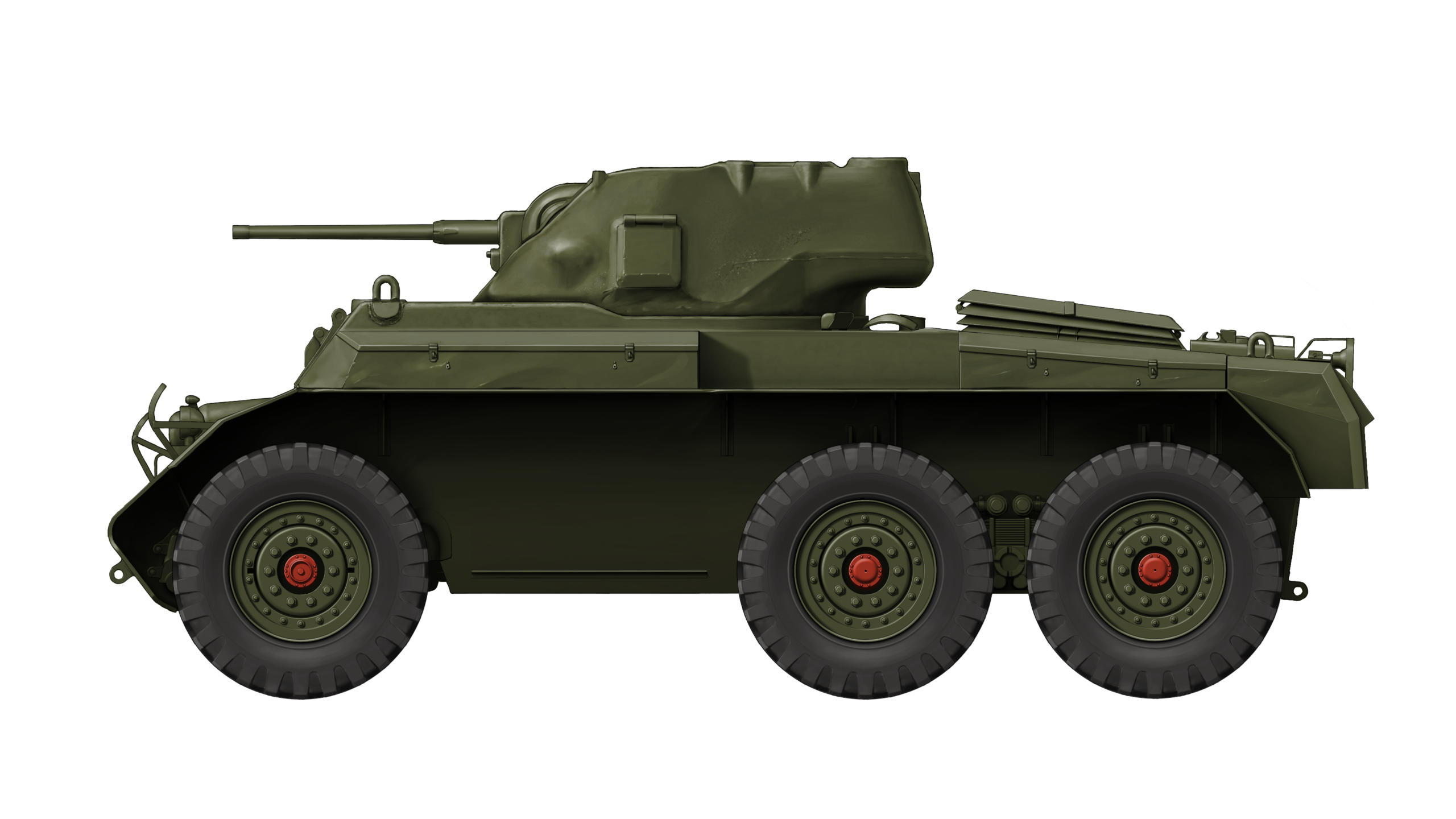
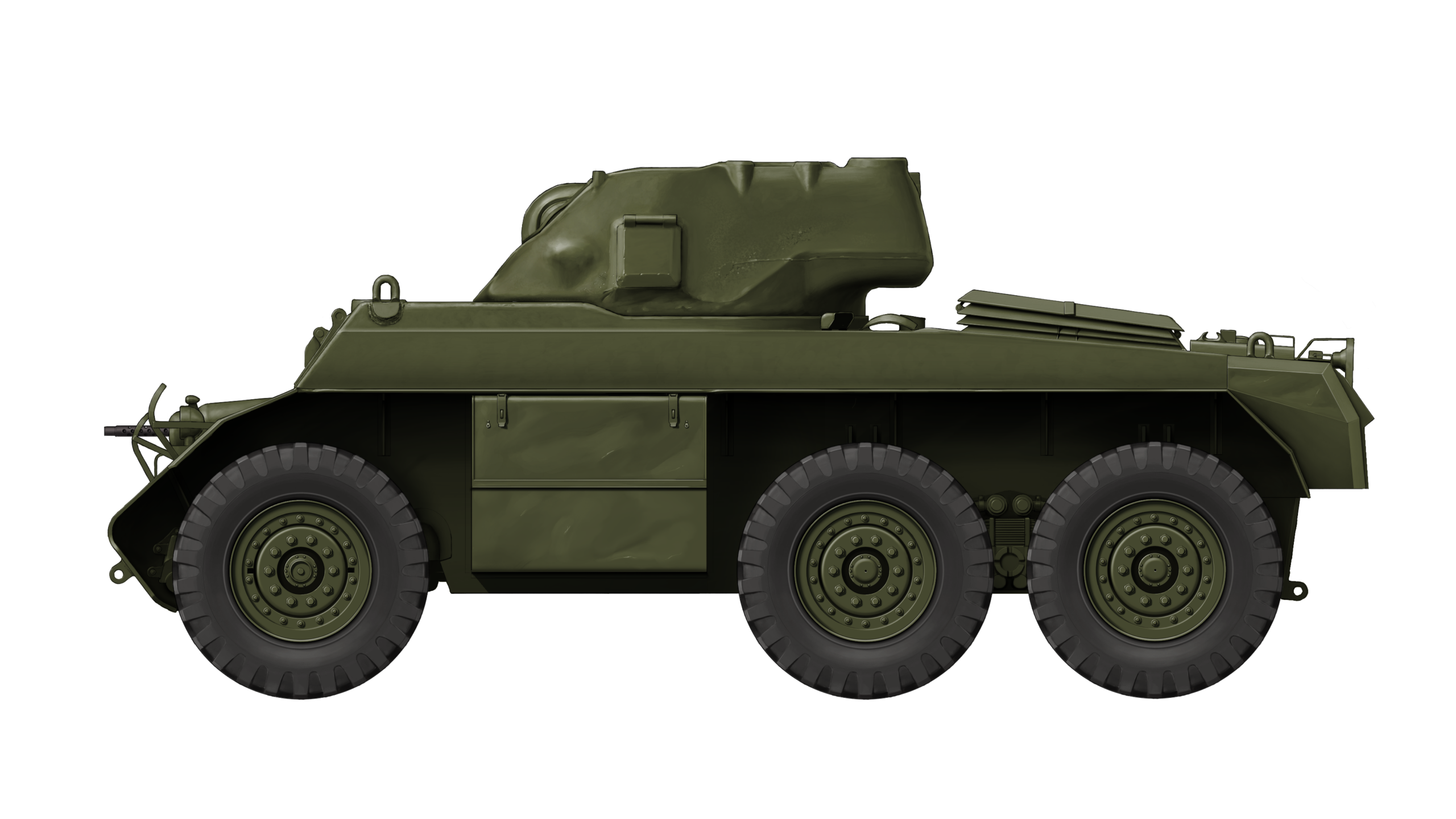
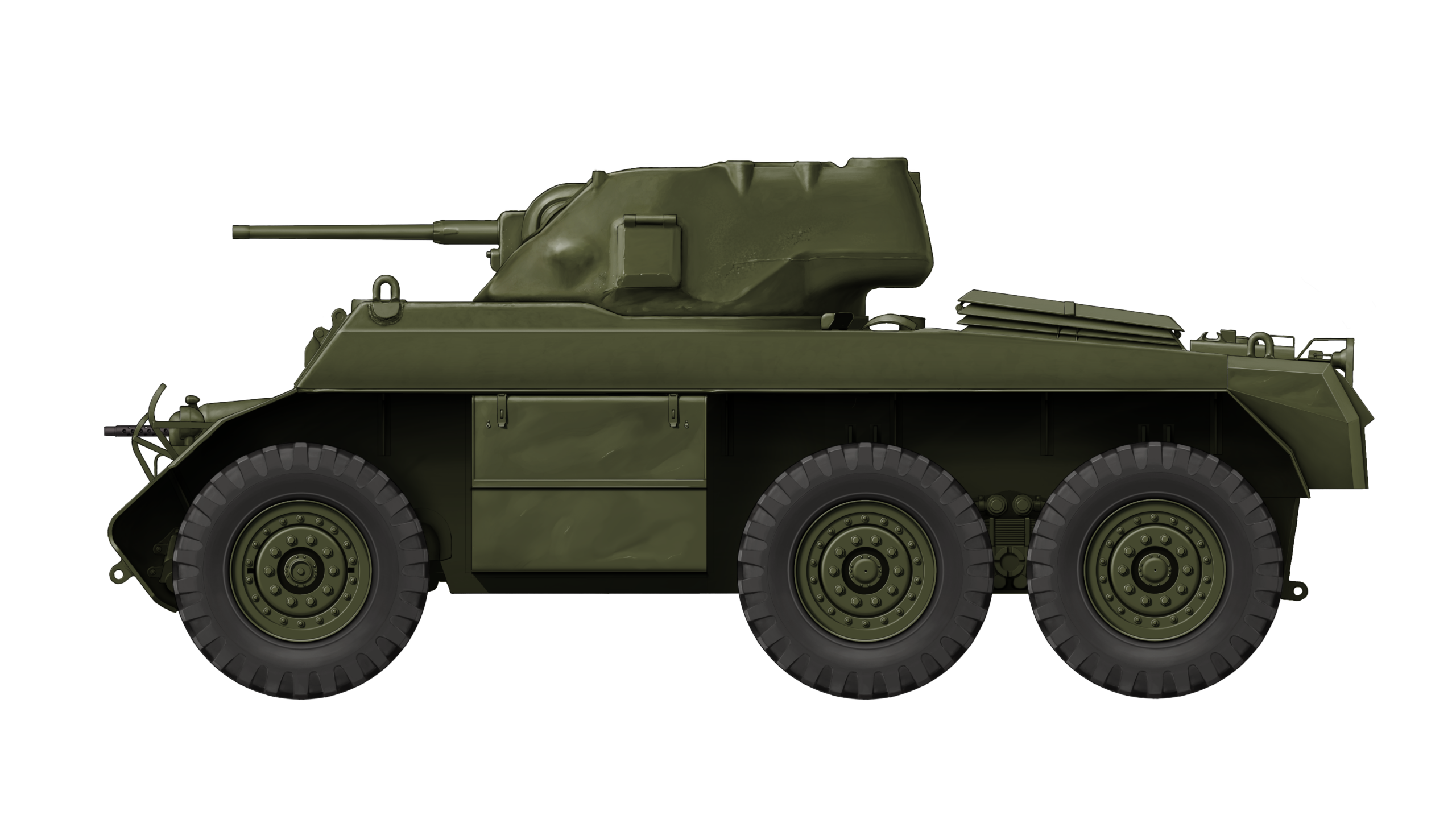
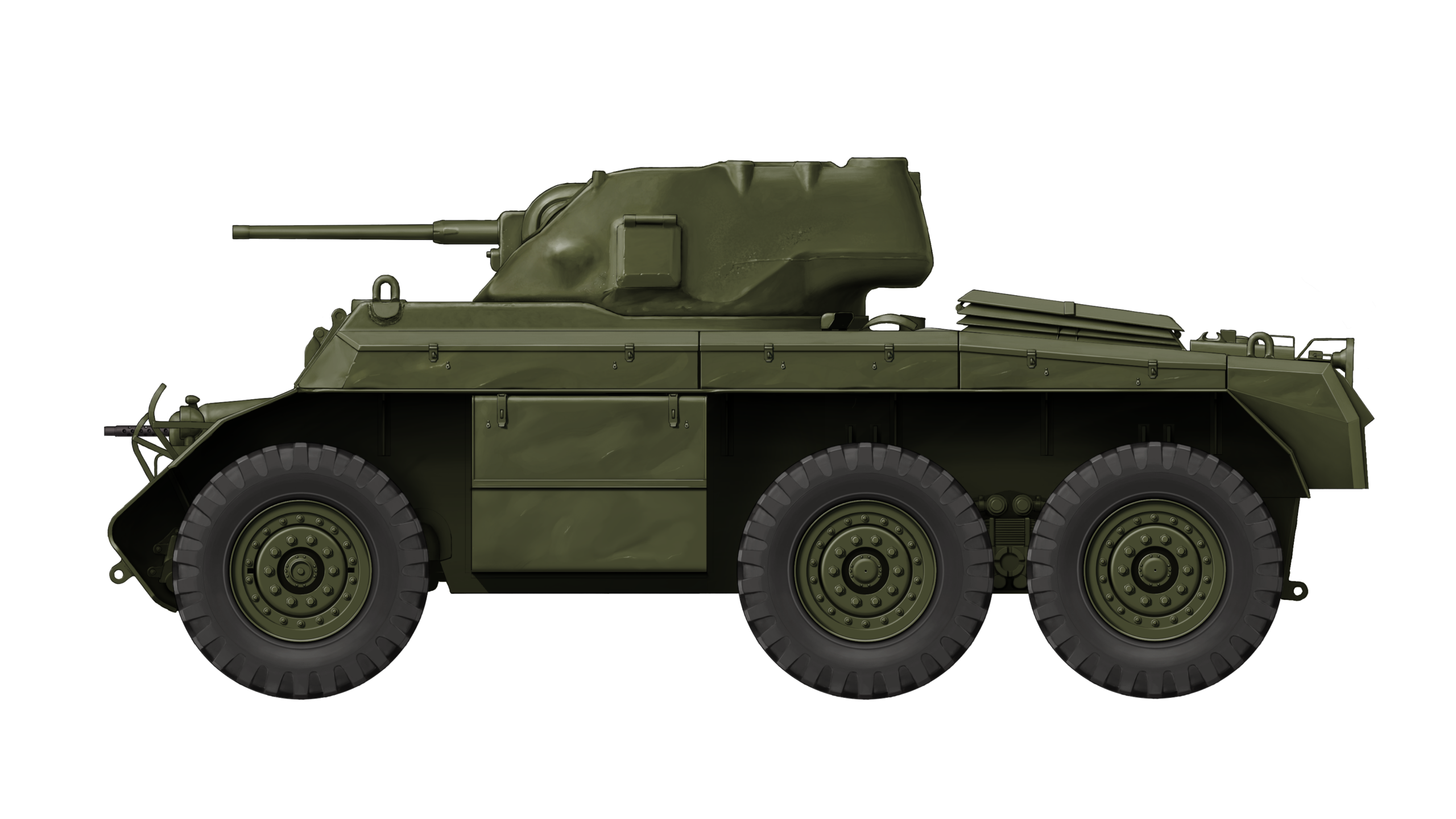
Specifications (T17 Deerhound) |
|
| Dimensions (L-W-H) | 5.5 meters x 2.6 meters x 2.3 meters (16.4 feet x 7.5 feet x 7.5 feet) |
| Total weight, combat loaded | 14.5 tonnes (16 US tons) |
| Crew | 5 (Driver, Co-driver, Commander, Gunner, Loader) |
| Propulsion | Two Hercules JXD 6-cylinder in-line 110 hp gasoline engine |
| Speed (road) | 95 kmh (60 mph) |
| Operational range | 400 km (250 miles) |
| Armament | 37 mm M6 .30 M1919A4 machine gun (Hull) .30 M1919A4 machine gun (Coaxial) .30 M1919A4 machine gun (Turret top) |
| Armor |
HullFront upper 19 mm (0.75 inch) TurretFront 32 mm (1.25 inch) |
| Acquired | 54 |
Sources
Ford M-8 Greyhound Exército Brasileiro – Surge o conceito de blindado 6×6 – Expedito Carlos Stephani Bastos
Fiat-Ansaldo CV-3 35 II no Exército Brasileiro – Expedito Carlos Stephani Bastos
Extermine o Inimigo – Dennison De Oliviera
Deerhound – Paulo Roberto Bastos and Hélio Higuchi
Armored Car: A history of American Wheeled Combat Vehicles – R.P. Hunnicutt
https://www.defesabrasil.com/forum/viewtopic.php?t=18372
https://caiafamaster.com.br/destaque/um-seculo-de-blindados-no-brasil-braco-forte-na-defesa-da-patria-aco-no04/
https://ecsbdefesa.com.br/carro-blindado-leve-t-17-deerhound-6×6-um-esquecido-no-exercito-brasileiro/

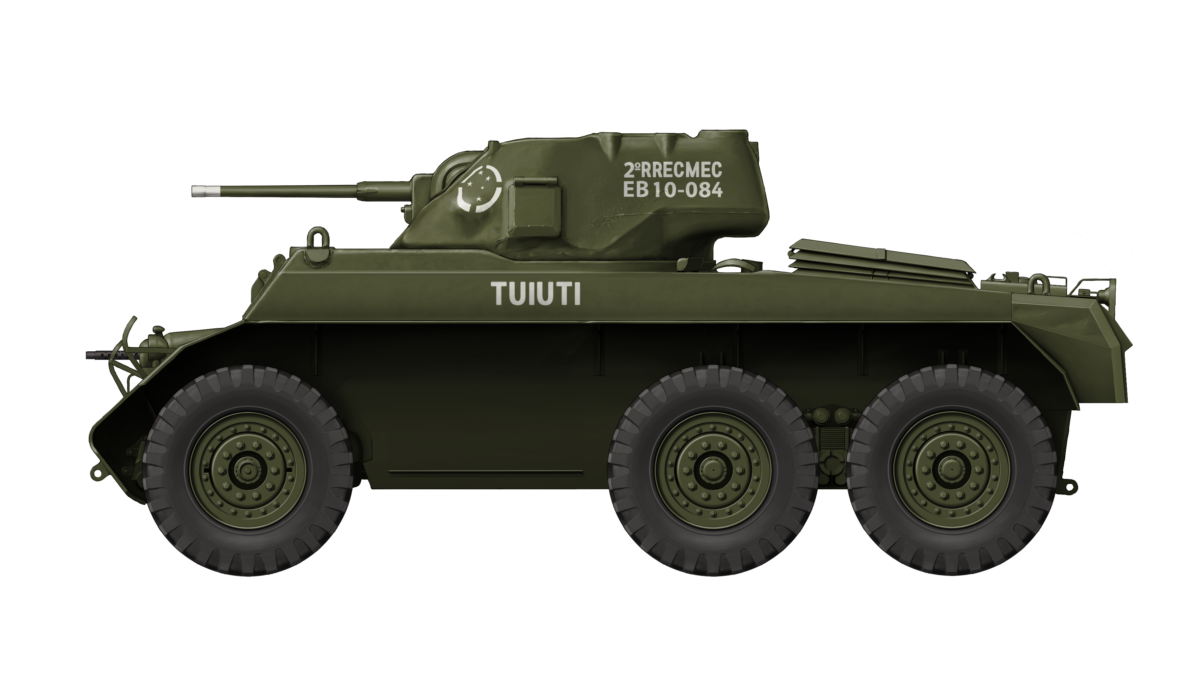
3 replies on “T17 Deerhound in Brazilian Service”
An excellent article that definitely corrects some commonly held beliefs. Given this and some data that had been discovered on use of the T18 Boarhound, I wonder if perhaps an article on the British influence on U.S. armored car design might be in order. It is equally curious that, aside from occasional experiments, the U.S. Army had little interest in armored cars until the British came calling; even the M8 started life as a proposal for a wheeled tank destroyer, given the obvious vulnerability of the M6 GMC.
Do know which British units used the T18 in North Africa?
this some what look like a mix between a m22 and a armed car and i love it